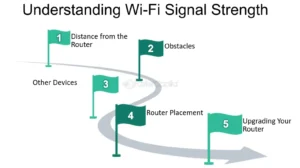Great bunker sand doesn’t just look good-it changes the game. The right choice gives players better control, smoother shots, and a more consistent experience. It also lowers maintenance costs and keeps your course looking sharp. High-quality sand shows that your course values playability and professional standards.
Keep reading to learn what makes bunker sand perform at its best.
The Importance of Particle Shape
When selecting bunker sand for a golf course, particle shape is one of the most important factors to evaluate. Angular sand particles grip each other well, forming a firm and stable surface. This helps prevent the sand from shifting too much when players swing or walk through the bunkers.
In contrast, sand with rounder particles may feel softer but tends to move more easily. This can lead to uneven surfaces, compacted lies, and more frequent maintenance. The ball may also sit too deep in the sand, making play more difficult and frustrating for golfers.
Angular bunker sand also improves drainage by allowing water to pass through more efficiently. This is a major advantage during wet weather, helping bunkers dry faster and reducing washouts. Better drainage means less downtime, lower maintenance, and a smoother playing experience for everyone.
Color Considerations
In the landscape industry, sand color is more than just a visual choice-it plays a major role in how a golf course looks and feels. Bright white sand creates a striking contrast with the green grass, giving bunkers a sharp and luxurious appearance. This polished style is favored at upscale courses and resorts where appearance matches playability.
Darker sands offer a more natural and relaxed feel, blending into tree-lined fairways and rustic course designs. These tones are ideal for traditional or countryside settings, offering a softer, earth-toned appearance. The choice of color can help shape the overall atmosphere of the course and match the landscape’s style.
Still, in the landscape industry, functionality should not be overlooked when choosing sand color. White sand reflects more sunlight, which can affect a golfer’s visibility during play. On the other hand, darker sand holds heat longer, which might impact play in warmer conditions and even influence how sand behaves underfoot.
Performance in Play
Performance matters most when picking sand for golf course bunkers. Quality sand should be easy for golfers to play from while remaining firm enough to retain its shape. It should drain well and maintain consistency in all conditions.
Maintenance and Cost Considerations
Choosing good golf course sand is about more than just the price. Better sand may cost more at first, but it saves time and money later by needing less work. It requires less frequent raking, refilling, or repair.
Low-quality sand can break down fast and hold too much water. This causes more work and makes the course harder to care for. High-quality golf course sand lasts longer and keeps the course in better shape.
Finish Strong with the Right Sand
Selecting top-quality bunker sand enhances your course’s visibility and performance. It keeps your bunkers playable, easy to maintain, and visually sharp for members and guests. When you focus on the right sand, you’re not just filling a pit-you’re raising the bar for the whole course.
Discover more tips on selecting and managing bunker sand by visiting our blog.











